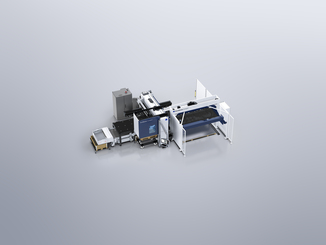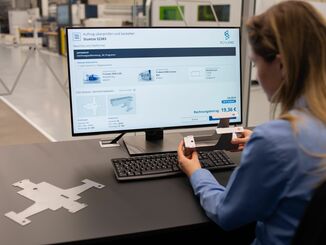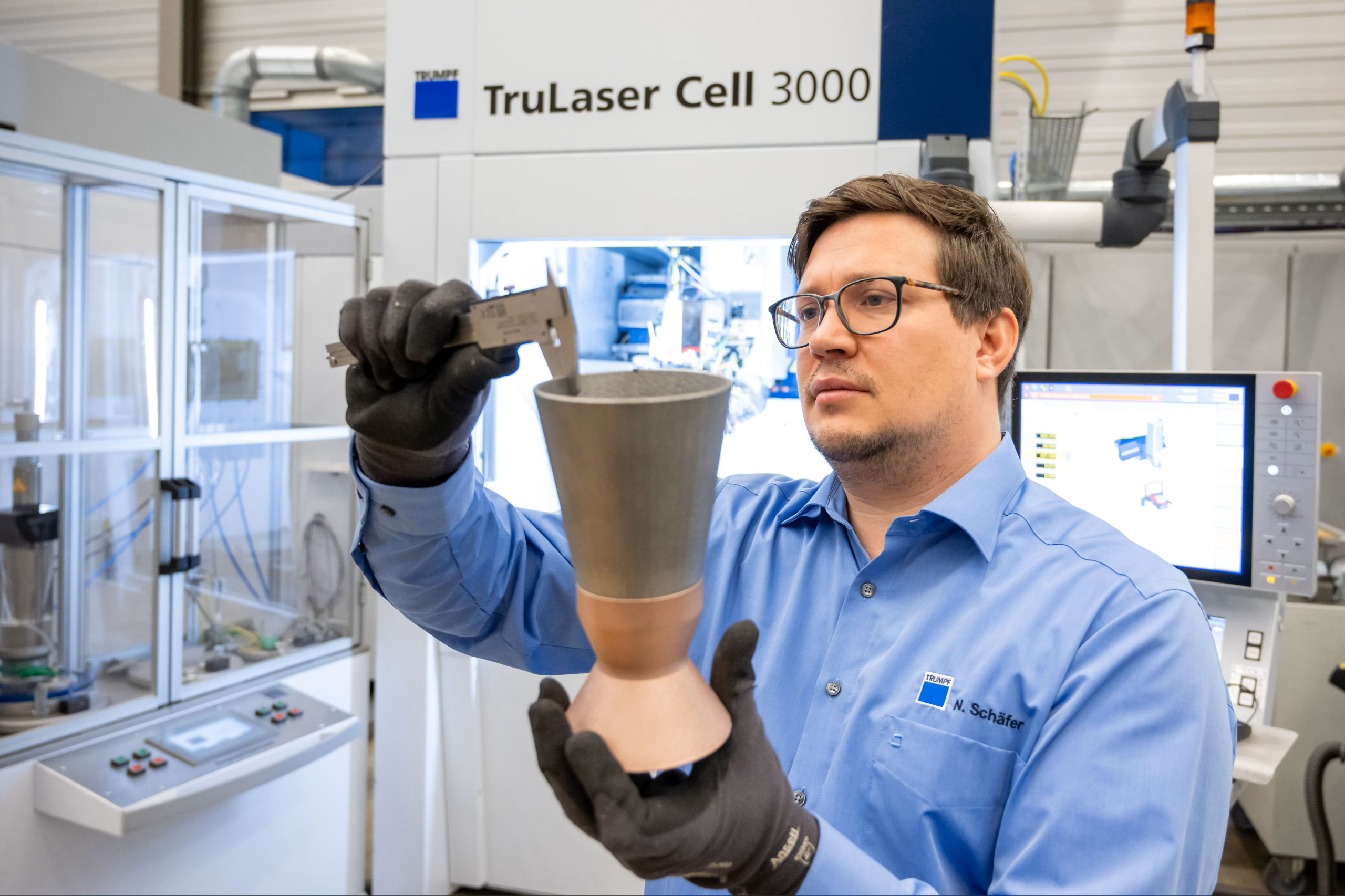
At Euroblech 2024, Trumpf presented a completely new solution for the automated sorting of 2D laser-cut parts.

© Trumpf
Reliable and fully automated removal
The loading and unloading automation system from Trumpf, the LiftMaster Compact, is used for this purpose. It removes the cut sheet from the pallet changer of the cutting machine and transfers it to the SortMaster station. This separates the components from the scrap skeleton in just a few seconds. The separated parts are then transported to the sorting area. “With our solution, we have decoupled the cutting, separating and sorting process from each other for the first time. This allows users to better utilize the laser machine and increase its throughput,” explains Schneider. A third pallet station also enables parallel manual sorting, for example for special formats. 
© Trumpf
Sorting with cameras and intelligent software
The SortMaster Vision is used for automated sorting. Thomas Schneider: “In a multi-year collaboration with Intrinsic, a leading AI and robotics software company at Alphabet, we have introduced adaptive robotics functions in our SortMaster Vision, including automated perception and robot path planning. This allows a robot to independently recognize the separated parts using AI-powered image recognition.” The software independently calculates the robot’s movement plan, including the gripping points. SortMaster Vision independently retrieves all part information from the cutting program. It simulates various removals in advance and selects the most suitable one at runtime. This eliminates the need for any programming of the sorting process. In addition, the process creates maximum flexibility with regard to the range of parts and batch sizes. “Thanks to the innovative process and the partnership with Intrinsic, customers can now automatically sort parts that could not be removed with conventional solutions, even with batch sizes of one,” promises Schneider. This primarily includes small or complex parts that run the risk of tipping or tilting in the rest grid. However, thicker parts can also be separated and automatically sorted using the separation process. “This fully automatic solution for separating and sorting is a real game changer,” Schneider continues. The two sorting modules can also be retrofitted at a later date, reducing the initial investment and gradually increasing the level of automation. 
© Trumpf
Slight decline
At the end of the 2023/2024 financial year on June 30, 2024, the Trumpf Group recorded a decline in sales of 3.6 percent to 5.2 billion euros (2022/2023 financial year: 5.4 billion euros). Incoming orders fell for the second time in a row to EUR 4.6 billion (financial year 2022/23: EUR 5.1 billion). This is 10.4% less than in the previous year. Earnings before interest and taxes (EBIT) fell by 114 million euros to 501 million euros as a result of the decline in sales compared to the previous year (615 million euros). The EBIT margin fell to 9.7 percent (previous year: 11.5 percent). Nicola Leibinger-Kammüller, CEO of Trumpf, said at the presentation of the balance sheet in Ditzingen: “The slowing global economy and geopolitical uncertainties led to a significant reluctance to make new investments among customers on all continents in the past financial year. We felt the effects of tougher competition than ever before, in some cases with protectionist measures from Chinese competitors. In terms of the outlook, we assume that the coming months of the current financial year will continue to be characterized by persistently weak demand. Trumpf is countering this economic crisis with clear measures to improve earnings, among other things.” Nevertheless, the number of employees increased by around 650 in the reporting period. New jobs were created in the EUV and Electronics business units in particular. As at June 30, 2024, the company employed 19,018 people worldwide (previous year: 18,352). In Germany, the number of employees rose by 4.2% to 9,505 (previous year: 9,124). Web: www.trumpf.com



